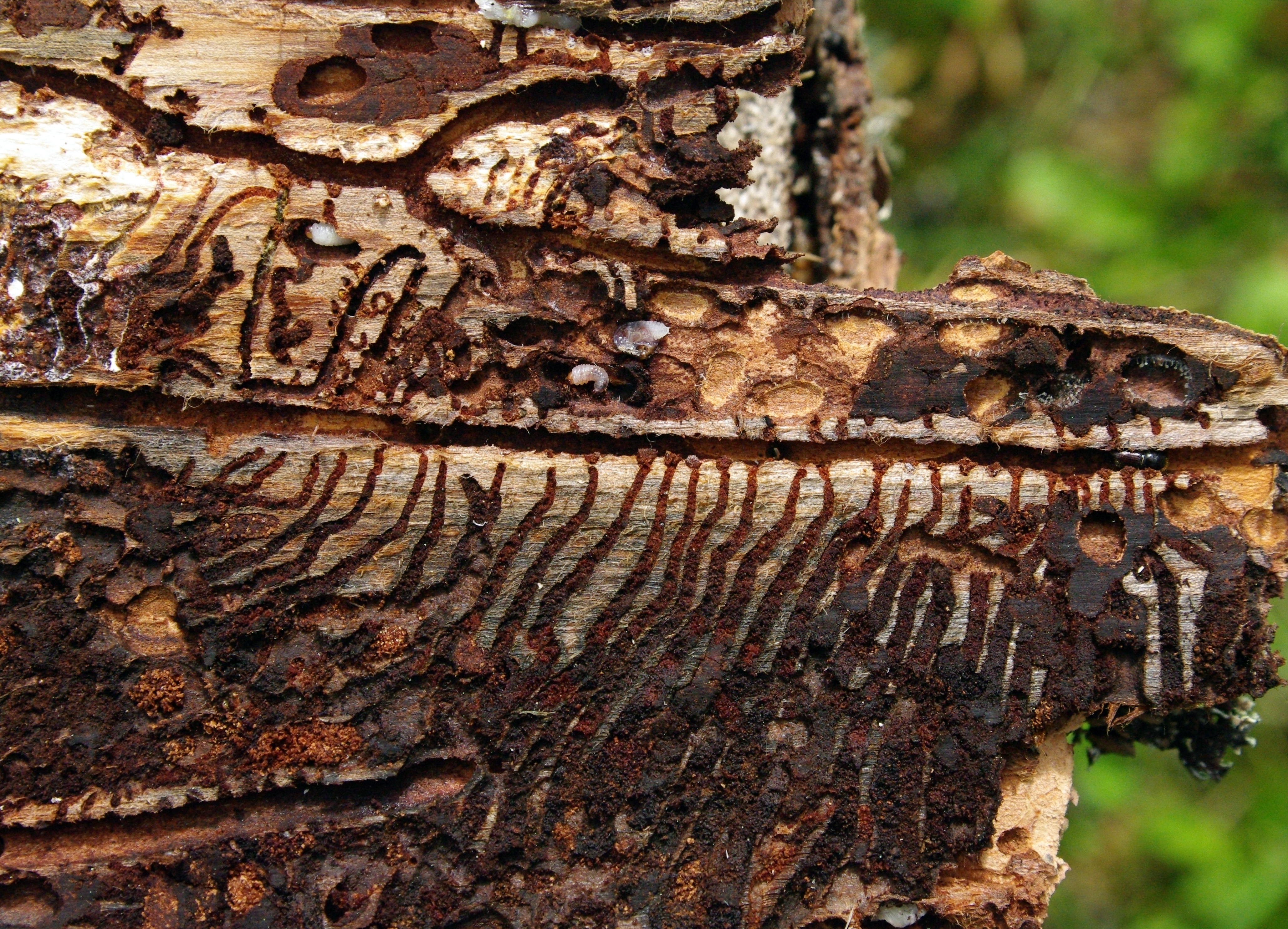|
Thanasimus Formicarius
The ant beetle (''Thanasimus formicarius''), also known as the European red-bellied clerid, is a medium size insect, rather soft-bodied, with strong mandibles that can tear between the hard sclerotized integument of bark beetles. Larvae and adults are common predators of bark beetles in Europe. Life cycle The adults overwinter at the base of conifers, rarely of deciduous trees. They emerge in the spring and fly to lower parts of trees to hunt bark beetles. Their common prey are pine bark beetles ''Tomicus piniperda'' and ''T. minor'', and the European spruce bark beetle The European spruce bark beetle (''Ips typographus''), is a species of beetle in the weevil subfamily Scolytinae, the bark beetles, and is found from Europe to Asia Minor and some parts of Africa. Biology of the species Morphology Adults are ..., ''Ips typographus''. Often they are seen waiting for their prey on the bark of fallen pine or spruce trees. Both ant beetles and bark beetles are attracted to ... [...More Info...] [...Related Items...] OR: [Wikipedia] [Google] [Baidu] |
Carl Linnaeus
Carl Linnaeus (; 23 May 1707 – 10 January 1778), also known after his ennoblement in 1761 as Carl von Linné Blunt (2004), p. 171. (), was a Swedish botanist, zoologist, taxonomist, and physician who formalised binomial nomenclature, the modern system of naming organisms. He is known as the "father of modern taxonomy". Many of his writings were in Latin; his name is rendered in Latin as and, after his 1761 ennoblement, as . Linnaeus was born in Råshult, the countryside of Småland, in southern Sweden. He received most of his higher education at Uppsala University and began giving lectures in botany there in 1730. He lived abroad between 1735 and 1738, where he studied and also published the first edition of his ' in the Netherlands. He then returned to Sweden where he became professor of medicine and botany at Uppsala. In the 1740s, he was sent on several journeys through Sweden to find and classify plants and animals. In the 1750s and 1760s, he continued to collect an ... [...More Info...] [...Related Items...] OR: [Wikipedia] [Google] [Baidu] |
Tomicus Piniperda
''Tomicus piniperda'', the common pine shoot beetle, is a bark beetle native throughout Europe, northwestern Africa, and northern Asia. It is one of the most destructive shoot-feeding species in northern Europe.J M Davies and C J King (1977) ''Pine Shoot Beetles''. Forestry Commission Leaflet 3. HMSO, London .Global Invasive Species Database''Tomicus piniperda'' (insect)/ref> Its primary host plant is Scots pine ''Pinus sylvestris'', but it also uses European black pine ''P. nigra'', maritime pine ''P. pinaster'', eastern white pine ''P. strobus'', red pine ''P. resinosa'', jack pine ''P. banksiana'' and other pines to a small extent, and more rarely on spruce ''Picea'' and larch ''Larix''.Vasconcelos, T., Nazare, N., Branco, M., Kerdelhue, C., Sauvard, D., & Lieutier, F. (2003). Host Preference of ''Tomicus piniperda'' and ''Tomicus destruens'' for Three Pine Species. ''Proceedings: JUFRO Kanazava 2003 “Forest Insect Population Dynamics and Host Influences"'19–21 Descript ... [...More Info...] [...Related Items...] OR: [Wikipedia] [Google] [Baidu] |
European Spruce Bark Beetle
The European spruce bark beetle (''Ips typographus''), is a species of beetle in the weevil subfamily Scolytinae, the bark beetles, and is found from Europe to Asia Minor and some parts of Africa. Biology of the species Morphology Adults are usually long, cylindrical and robust, black or brownish-black. Elytral declivity is slightly shiny, with 4 teeth on each margin side. The third tooth is the biggest and club like on its top. The egg is yellowish-white. The larva is white and legless. The pupa is also white. Life cycle and interactions Bark beetles are so named because they reproduce in the inner bark, living and dead phloem tissues, of trees. Adult beetles hibernate in forest litter and host trees when environmental conditions are not favorable for reproduction. When conditions are right, they travel up to half a mile in search of a vulnerable host. Once the host is located, the adult burrows through the weakened bark in order to build tunnels where they can mate and l ... [...More Info...] [...Related Items...] OR: [Wikipedia] [Google] [Baidu] |
Mutilla
''Mutilla'' is a genus of parasitoid wasp belonging to the family Mutillidae. Species * ''Mutilla europaea'' Linnaeus, 1758 Events January–March * January 1 – Swedish biologist Carl Linnaeus (Carl von Linné) publishes in Stockholm the first volume (''Animalia'') of the 10th edition of Systema Naturae, 10th edition of ''Systema Naturae'', the sta ... * '' Mutilla marginata'' Baer, 1848 * '' Mutilla quinquemaculata'' Cyrillo, 1787 References Biolib Mutillidae Hymenoptera genera Taxa named by Carl Linnaeus {{apocrita-stub ... [...More Info...] [...Related Items...] OR: [Wikipedia] [Google] [Baidu] |


